The 7-Day Mulde View Point & Poon Hill Trek from Kathmandu offers a unique blend of stunning landscapes and cultural experiences that appeals to trekkers of all skill levels. With a scenic drive to Pokhara setting the stage, the journey unfolds through vibrant rhododendron forests and traditional villages that showcase the rich heritage of the Gurung and Magar communities. Highlights like the mesmerizing sunrise from Poon Hill and the panoramic views at Muldai Viewpoint promise unforgettable moments. However, there’s much more to consider before embarking on this adventure, including essential packing tips and safety guidelines.
Key Points
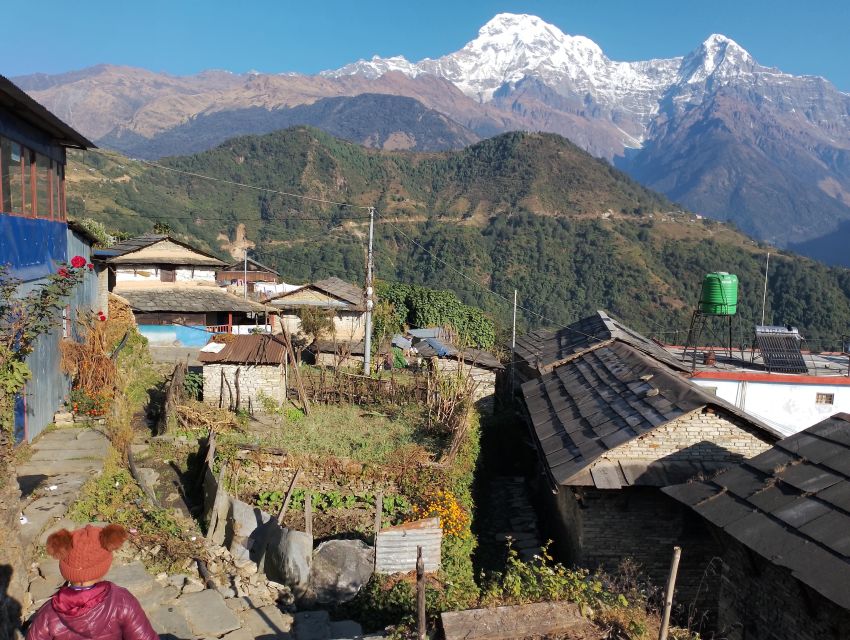
- The 7-day trek starts from Kathmandu, with a budget-friendly price of $387.09 per person, including guided tours and accommodations.
- The itinerary features stunning sunrise views from Muldai Viewpoint and Poon Hill, combined with cultural experiences among local communities.
- Transportation includes luxury bus transfers from Kathmandu to Pokhara and private jeep rides to trekking starting points.
- Accommodation consists of two nights in a 2-star hotel and guesthouse stays during the trek, ensuring comfort along the journey.
- Free cancellation is available up to 24 hours in advance, providing flexibility for travel plans and budgeting.
Trek Overview and Highlights
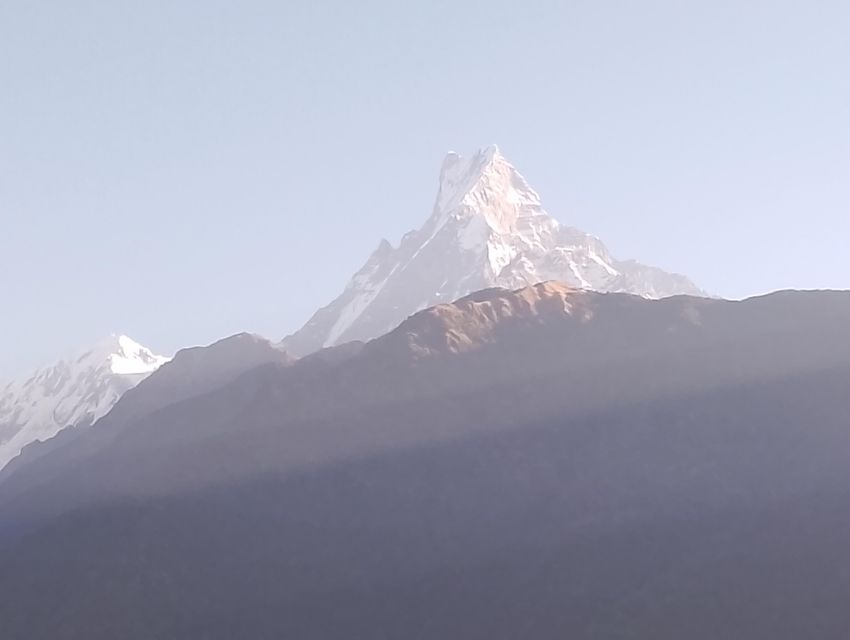
The Kathmandu Trek to Mulde View Point and Poon Hill offers an unforgettable adventure, combining stunning sunrise vistas over the Annapurna and Dhauligiri ranges with rich cultural experiences among the Gurung and Magar communities.
Over seven days, trekkers explore lush rhododendron forests and terraced hillsides while soaking in panoramic views of majestic Himalayan peaks.
This trek caters to various skill levels, making it accessible for everyone from beginners to experienced hikers.
Priced from $387.09 per person, it includes essential amenities like guided tours, transport, and guesthouse accommodations.
Travelers can enjoy the flexibility of free cancellation up to 24 hours in advance, ensuring a hassle-free experience.
The best times to trek are in spring and autumn for optimal weather conditions.
Detailed Itinerary
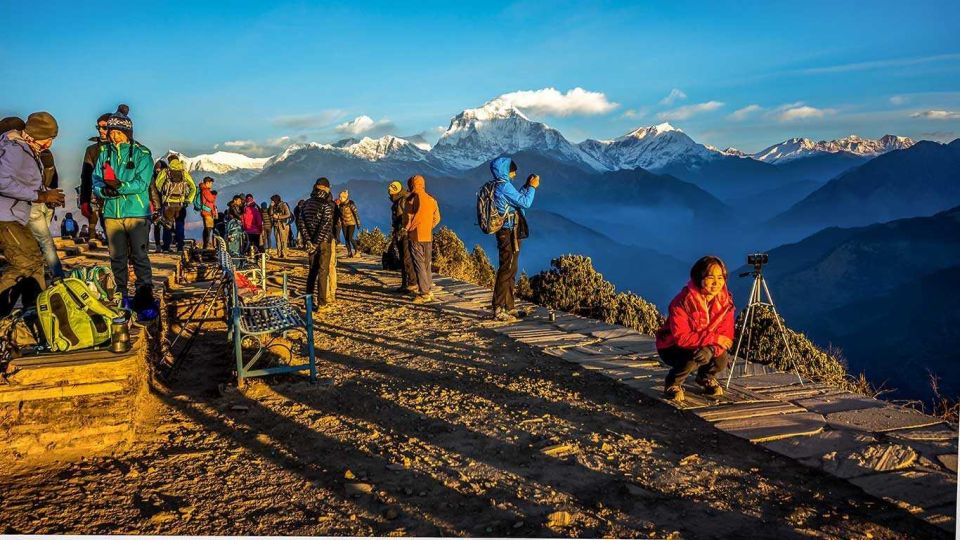
A thrilling seven-day adventure awaits trekkers as they embark on the detailed itinerary for the Kathmandu Trek, which includes breathtaking views and captivating cultural experiences.
On Day 1, they’ll be picked up from Kathmandu and driven to Pokhara for an overnight stay.
Day 2 involves a drive to Kimche, followed by a short trek to Ghandruk.
On Day 3, trekkers will hike to Tadapani, while Day 4 takes them to Dobato.
Day 5 includes a visit to the stunning Muldai Viewpoint before heading to Ghorepani.
On Day 6, an early morning hike to Poon Hill offers a spectacular sunrise, followed by a trek to Hile and a drive back to Pokhara.
Inclusions and Amenities
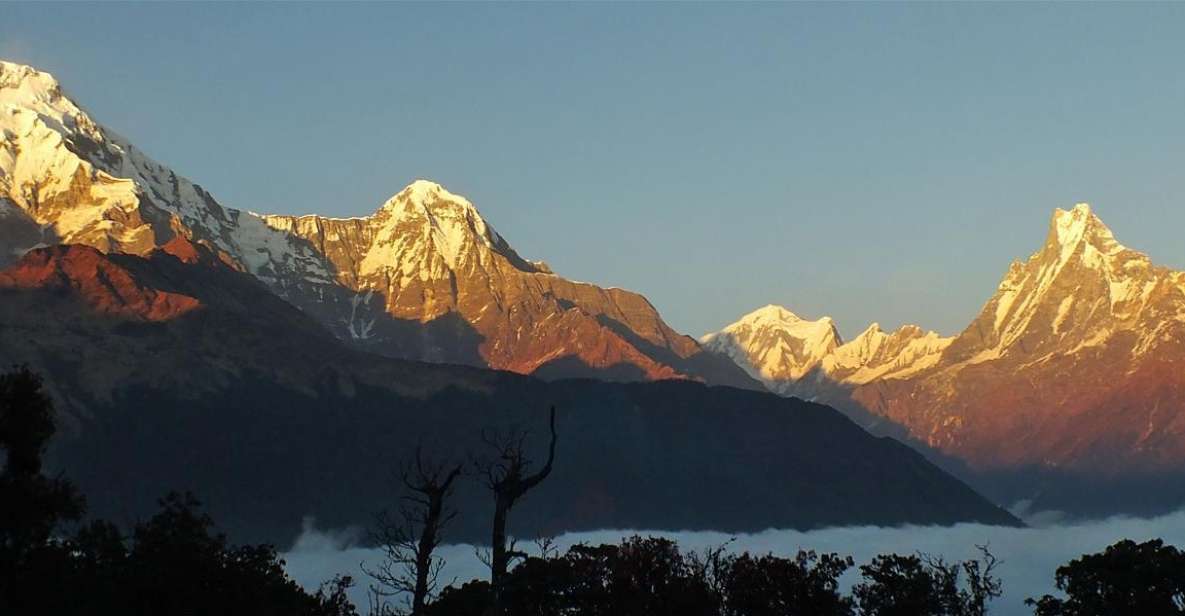
Trek participants can look forward to a range of inclusions and amenities designed to enhance their experience and ensure a comfortable journey.
The package includes hotel pick-up and drop-off, along with a luxury tourist bus transfer from Kathmandu to Pokhara. For added convenience, a private jeep covers the routes between Pokhara to Kimche and Hile back to Pokhara.
Throughout the trek, trekkers will be accompanied by a friendly, English-speaking guide whose expenses are fully covered.
Participants will enjoy two nights in a 2-star hotel in Pokhara with breakfast, while guest house accommodations await during the trek.
An emergency first aid kit and trekking pole are also provided, ensuring safety and support along the way.
Important Packing Tips
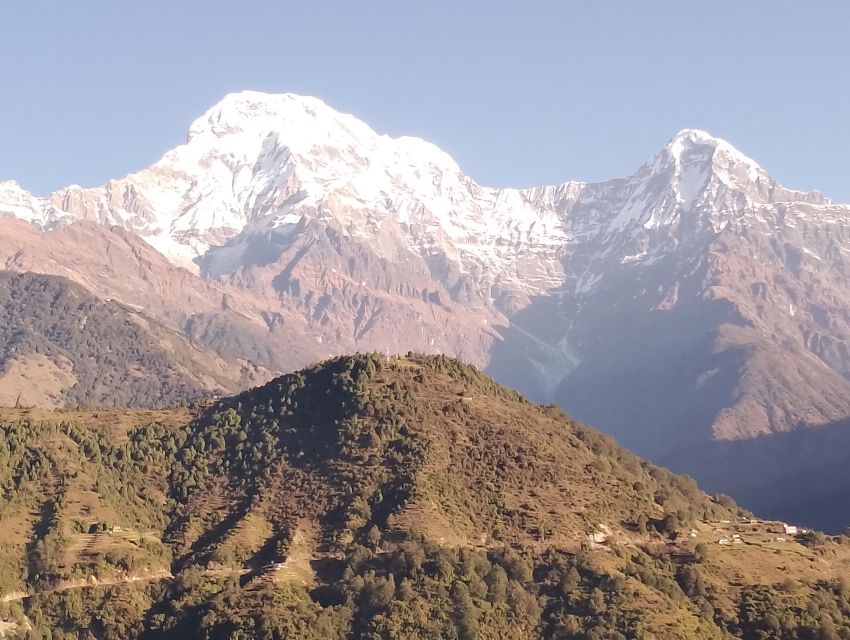
Packing smart is essential for a comfortable and enjoyable trek in the stunning landscapes of Nepal.
First, sturdy, comfortable trekking shoes are a must to navigate the diverse terrain. Layered clothing, including a warm jacket and moisture-wicking base layers, helps accommodate changing temperatures.
Don’t forget a lightweight rain jacket and a hat for sun protection. A good quality backpack should fit snugly, holding essentials like a water bottle, snacks, and a first-aid kit.
A sleeping bag rated for cooler temperatures will ensure a good night’s sleep in guesthouses. Lastly, pack a power bank for your devices and bring a copy of your passport.
With these essentials, trekkers can fully enjoy the breathtaking beauty of the Himalayas.
Weather Considerations
Considering the weather is crucial for planning a successful trek to Mulde View Point and Poon Hill, as conditions can vary significantly throughout the year.
The best times to trek are during spring (March to May) and autumn (September to November), when the weather’s generally stable, offering clear skies and breathtaking views. During these seasons, daytime temperatures are mild, making hiking enjoyable.
However, trekkers should be prepared for sudden weather changes, especially at higher altitudes, where conditions can turn chilly.
Monsoon season (June to August) brings heavy rainfall, making trails slippery and less accessible.
Winter (December to February) can be cold and snowy, so proper gear is essential if trekking during these months.
Understanding these weather patterns helps ensure a safer, more enjoyable experience.
Booking Information
Booking a spot for the Kathmandu trek to Mulde View Point and Poon Hill is straightforward, allowing travelers to easily secure their adventure without upfront payment.
Interested trekkers can simply check availability for their preferred starting dates and participant numbers. The flexible booking policy means they can reserve their spots and pay later, making it convenient for those with changing plans.
Plus, travelers should consider optional gratuities and travel insurance for peace of mind. Personal expenses aren’t included, so it’s wise to budget for food and drinks along the trek.
With the promise of stunning views and cultural experiences, securing a spot on this trek is the first step toward an unforgettable journey in the Himalayas.
Trekking Safety Guidelines
Before setting off on their trek, travelers should familiarize themselves with important safety guidelines to ensure a secure and enjoyable experience in the Himalayas.
First, they must acclimatize properly to avoid altitude sickness, taking it slow and staying hydrated.
Wearing sturdy, comfortable footwear is crucial for navigating uneven terrain.
Travelers should also carry a basic first aid kit and know how to use it.
Staying informed about weather conditions helps them dress appropriately and prepare for sudden changes.
It’s wise to trek with a guide, as local knowledge enhances safety.
Finally, keeping communication devices handy allows for quick assistance if needed.
Following these guidelines ensures a safe and memorable adventure in the breathtaking mountains.
Cultural Insights and Experiences
Trekking through the Annapurna region offers travelers a unique opportunity to enjoy the rich cultural heritage of the Gurung and Magar communities, where traditional customs and vibrant local life come alive.
As trekkers navigate through charming villages, they’ll witness colorful festivals, traditional dances, and the warm hospitality of local families. Visitors often enjoy sharing a meal of dal bhat with their hosts, offering a genuine taste of Nepali culture.
Local artisans showcase their crafts, providing insights into age-old techniques. Engaging with community members, trekkers can learn about their unique lifestyles and the significance of their customs.
This trek isn’t just about stunning landscapes; it’s a journey into the heart of Nepal’s diverse cultural tapestry.
Frequently Asked Questions
What Is the Best Time for Photography During the Trek?
The best time for photography during the trek is early morning, especially at sunrise. The soft light illuminates the Himalayan peaks beautifully, enhancing colors and capturing stunning landscapes, making every moment unforgettable.
Are There Any Age Restrictions for Participants?
There aren’t strict age restrictions for participants. However, it’s essential for individuals, especially older adults or those with health concerns, to assess their physical fitness and consult with a healthcare professional before embarking on the trek.
Can Dietary Restrictions Be Accommodated During the Trek?
Yes, dietary restrictions can be accommodated during the trek. The guide ensures that local food options cater to various needs, so participants should communicate their preferences in advance for a smooth experience.
Is There Mobile Network Coverage Along the Trekking Route?
There’s limited mobile network coverage along the trekking route. While some areas may have connectivity, trekkers shouldn’t rely on it completely. They should prepare for potential disconnection during their adventure in the Himalayas.
What Happens in Case of an Emergency During the Trek?
In case of an emergency during the trek, the guide assesses the situation, provides first aid, and coordinates evacuation if necessary. They’re trained to handle emergencies, ensuring everyone’s safety is the top priority throughout the journey.
Not for you? Here's more of our most recent tour reviews happening neaby
- Nepal Trekking and Safari Tour
- From Pokhara: 8 Day Poon Hill,Khopra,Khayer Lake Yoga Trek
- Pkr :4 D,Budget Backpackerers Group Poon Hill Trek (Fix Dep)
- Pokhara: 4 Day Poon Hill Trek
- 6 Night 7 Days Khopra Hill Trek From Pokhara
- From Pokhara: 4 Day Mulde View Point With Poon Hill Trek
- From Pokhara: 3-Day Ghorepani Poonhill Short Trek
- Pokhara: 5-Days Ghorepani and Poon Hill Trek via Ghandruk
Recap
To sum it up, the 7-Day Mulde View Point & Poon Hill Trek from Kathmandu offers an incredible opportunity to learn about Nepal’s stunning landscapes and vibrant culture.
Whether you’re an experienced trekker or a novice, this journey promises unforgettable experiences, breathtaking views, and connections with local communities.
With careful planning and preparation, adventurers can fully enjoy the beauty of the Annapurna and Dhauligiri ranges while creating lasting memories.
Don’t miss out on this remarkable trek!
